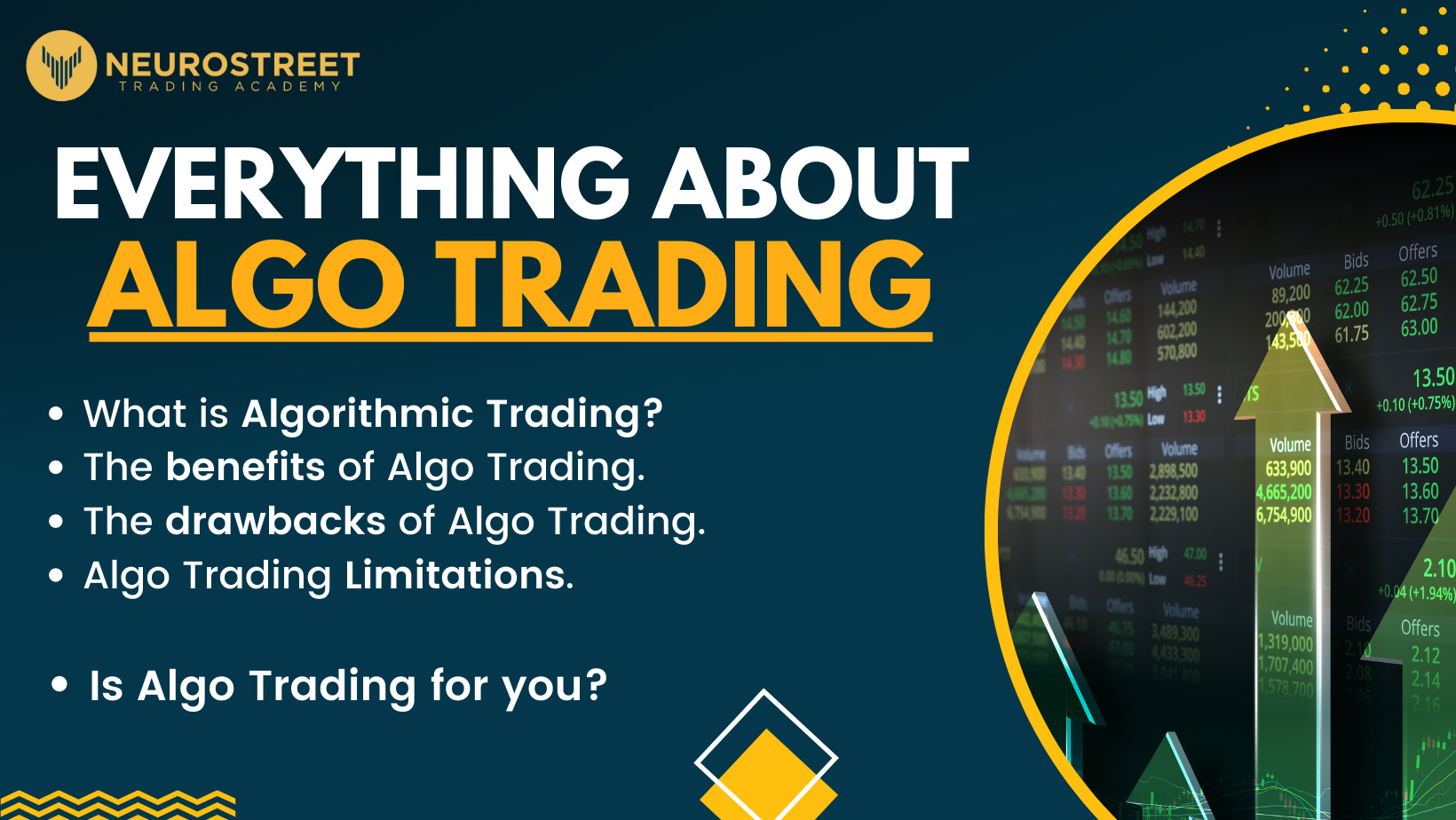Algorithmic Trading: Benefits, Risks, and Limitations
Algorithmic trading is a technique that uses computer algorithms to make trading decisions. Algo trading has grown increasingly popular over the years, with many traders using it to automate their trading activities. It is mainly known as automated trading, algo trading, and EA Trading and it involves using software programs to execute trades based on predefined rules and parameters.
The technique can analyze vast amounts of data, identify market trends and make trading decisions based on a set of precise rules. It has become increasingly popular in the finance industry as technology has advanced and the markets have become more complex. It is said that hedge funds and big financial institutions mainly rely on algos for their trading activities.
In this article, we’ll discuss the benefits, risks, and limitations of algorithmic trading. Let’s dive into it!
Benefits of Algorithmic Trading
Algo trading has many benefits, so let’s tackle them one by one.
Speed and Efficiency
One of the primary benefits of algorithmic trading is speed. The technology can execute trades in a matter of milliseconds, which can be critical in fast-paced markets where every second counts. Automated trading systems can process vast amounts of data and analyze market trends faster than human traders can, leading to more efficient trades and potentially higher profits.
Have you ever missed a winning trade because you were too slow to execute and make a decision? Probably yes. That’s why algos are great.
Consistency
Algorithmic trading systems can be programmed to follow a set of rules consistently. This can eliminate the possibility of human error, emotions and biases affecting trading decisions. Automated trading systems are not prone to the emotional biases that human traders can exhibit, such as fear, greed, and overconfidence.
And as you know – 90% of trading is psychology. So, if the psychological aspect is removed from trading – you have a higher chance of trading success.
Backtesting
Algorithmic trading systems can be tested and optimized using historical data to ensure that they are effective in a variety of market conditions. This can help traders identify the best strategies for different market scenarios, reducing the risks associated with trial-and-error trading.
How long does it take you to backtest a strategy manually? Months of tedious work, logging data, analyzing it manually, and banging your head in the wall to figure out the best way to go around it. With algos – you don’t have that problem.
Diversification
Algorithmic trading can allow for the simultaneous execution of multiple trades across different markets and instruments, allowing traders to diversify their portfolios and potentially reduce risk. Automated trading systems can also execute trades across different time zones, making it possible to trade 24/7. Of course – trading all the time does not mean that it will always be profitable. Keep this in mind. There must be human interaction as well.
Risks of Algorithmic Trading
As with anything in life, trading algos have some drawbacks. Let’s explore them.
Technology Risk
One of the primary risks of algorithmic trading is technology risk. Automated trading systems rely heavily on technology, which can be subject to failures, glitches, and system crashes. These technical issues can potentially result in large losses for traders.
It’s really painful to let your algo run, go away from your screens, only to return with a big loss. It happens…
Model Risk
The effectiveness of an algorithmic trading model is dependent on the quality of the data used to develop it. If the data is incomplete or incorrect, the model may not be effective, leading to low-quality trading decisions and respective losses.
This risk can be mitigated by using high-quality data and ensuring that the model is tested and optimized using historical data.
Regulatory Risk
Algorithmic trading is subject to regulatory scrutiny and can be subject to regulatory changes. Compliance with regulations can be costly and time-consuming, and non-compliance can result in fines and penalties. Traders should ensure that their algorithmic trading systems comply with all relevant regulations.
Market Risk
Algorithmic trading systems can be vulnerable to sudden changes in market conditions or unexpected events. These events can potentially cause large losses if the system is not designed to respond to such situations. Traders should ensure that their algorithmic trading systems are designed to handle unexpected market events and that they have stop-loss mechanisms in place.
For example – don’t run your algo before big news events – you are very likely to blow your trading account. And also – make sure to have stop-loss limits in place, so that your algo automatically stops trading when a certain loss level is reached.
Over-Optimization Risk
It is possible to over-optimize an algorithmic trading system, leading to it being too specific to certain market conditions or data sets. This can lead to potential losses if the market conditions change or if no executed trades over a long period of time.
Limitations of Algorithmic Trading
With all the drawbacks being mentioned, there are also certain limitations we have to address when it comes to algo trading.
Lack of Flexibility
Algorithmic trading systems are designed to execute trades based on a set of predefined rules and parameters. This lack of flexibility can make it difficult for traders to respond to unexpected events or changes in market conditions that may require a different approach.
Dependency on Historical Data
Algorithmic trading systems rely heavily on historical data to make trading decisions. This can make them less effective in highly volatile markets or during periods of significant economic or political events that may have an impact on the markets.
If you are a trader, you know that markets change constantly. You have to be tweaking your algo regularly.
Difficulty in Monitoring
Automated trading systems can make hundreds or even thousands of trades in a matter of seconds. This can make it difficult for traders to monitor all trades and identify potential issues or risks.
Algo Trading – Is it for you?
Algorithmic trading can provide many benefits to traders, but as we have seen – it also comes with many limitations and drawbacks. There are quite a lot of risks involved when algo trading.
It is important to realize that trading with algorithms is a separate way of trading. Just like we have Price Action traders, Fundamental analysis traders, we also have Algo Traders, which require a different strategy and approach. So, you have to be dedicated and determined to explore this way of trading and learn how to perfectly balance human interaction with algo trading.
Algorithmic trading can be a valuable tool for traders, but it is important to understand its benefits, risks, and limitations before implementing it in a trading strategy.
If you are interested in algo trading and want to ensure you are trading with regulated, profitable and regularly updated algos, make sure to consider joining us at ARC-AI – Architects of Algos and Indicators.
We have 7 Algos that are waiting to be exploited. Make sure to visit our website at https://architectsai.com/


